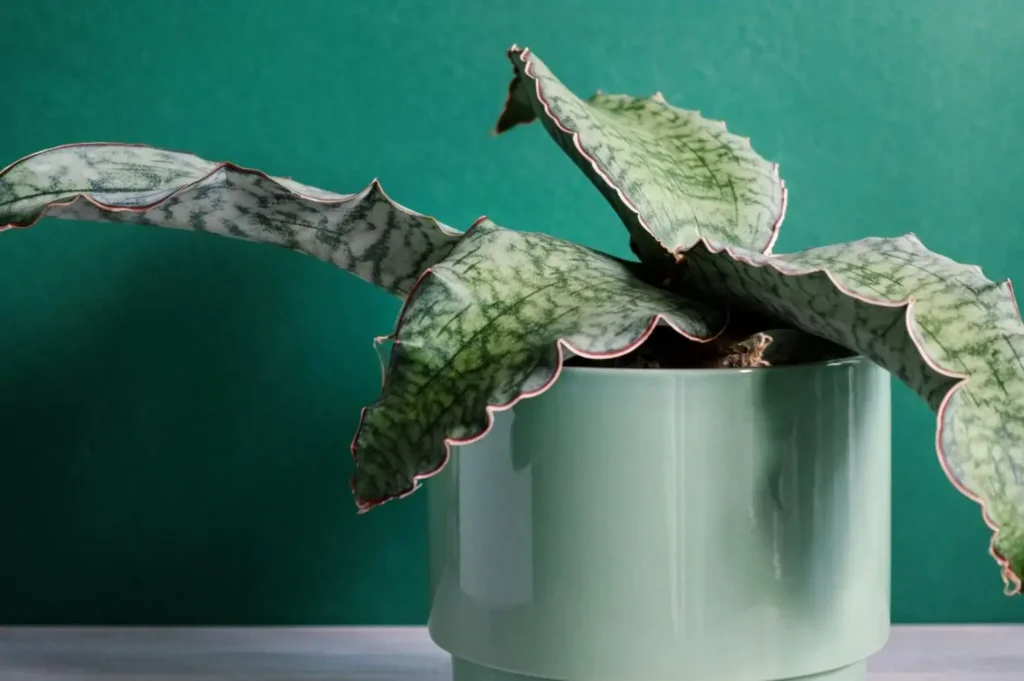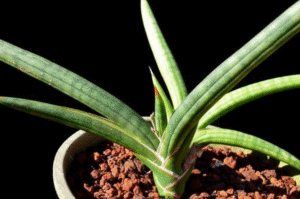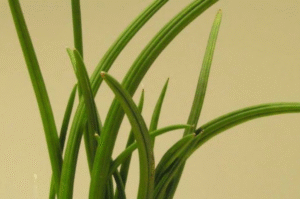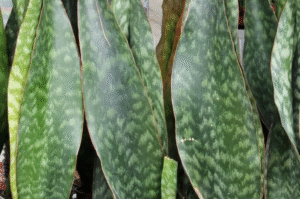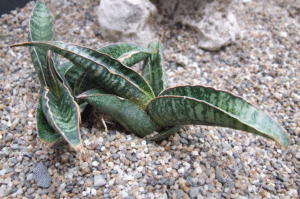Sansevieria Kirkii, also known as Star Sansevieria, is one of the more underrated gems in the snake plant family. With its long, wavy leaves, intricate patterns, and tough-as-nails nature, it’s a perfect fit for plant lovers looking for a low-maintenance yet striking indoor or outdoor plant.
In this detailed guide, we’ll walk you through everything you need to know to plant, grow, and care for Sansevieria Kirkii successfully. Whether you’re a beginner or an experienced gardener, this article has the insights you need to keep your Kirkii thriving all year round.
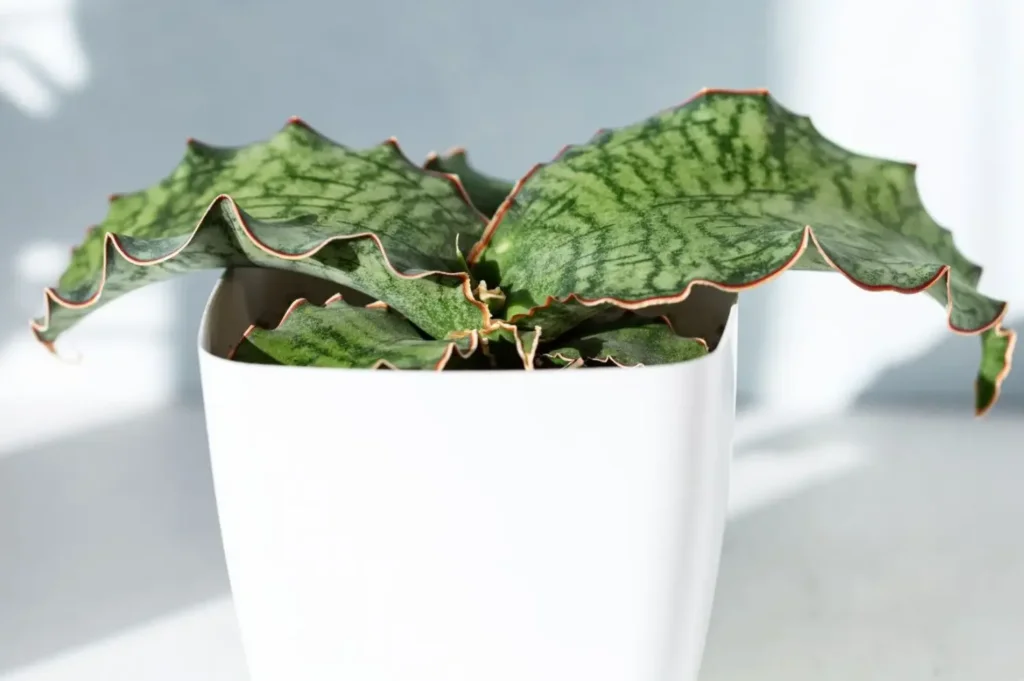
What Makes Sansevieria Kirkii Special?
Before we dig into the soil, let’s talk about why this plant is worth your time.
Unique Features
- Leaf Design: The leaves are thick, long, and often arching with undulating edges. The surface is a mix of deep green, grayish hues, and mottled patterns, giving it a star-like or prehistoric look.
- Drought-Resistant: Like most snake plants, Kirkii stores water in its leaves, making it perfect for people who forget to water often.
- Air-Purifying Abilities: It filters toxins like formaldehyde and benzene, improving indoor air quality.
- Slow Grower: This plant won’t take over your space—ideal for smaller homes or minimalist decor.
Planting Sansevieria Kirkii: Setting the Foundation
A good start is half the battle. If you’re planting from scratch, here’s what you need to know.
1. Choose the Right Pot
Go for a terra cotta or ceramic pot with drainage holes. Kirkii doesn’t like soggy roots, and proper airflow is essential.
Pro Tip:
Avoid deep pots. Sansevieria Kirkii has shallow roots and prefers wider containers.
2. Use the Right Soil
Soil is everything. Use a well-draining cactus or succulent mix. You can also DIY your soil:
- 2 parts potting soil
- 1 part perlite or pumice
- 1 part coarse sand
This mix ensures water drains quickly, reducing the risk of root rot.
3. Best Time to Plant
Late spring or early summer is ideal. The warmer temperatures help the plant establish roots quickly without the shock of cold weather.
Growing Conditions for Sansevieria Kirkii
Creating the right environment is key to long-term health. Here’s how to set it up:
1. Light Requirements
Sansevieria Kirkii is versatile. It tolerates low light but thrives in bright, indirect sunlight. Morning sun is best, especially if you’re placing it near an east-facing window.
What to Avoid:
Direct harsh afternoon sun can scorch the leaves.
2. Temperature & Humidity
- Ideal Temperature: 65–85°F (18–29°C)
- Minimum Tolerance: Not below 50°F (10°C)
This plant enjoys moderate humidity but adapts well to dry indoor conditions. Just don’t leave it out during frosty nights.
3. Watering Schedule
Overwatering is the number one killer. Always follow the “soak and dry” method:
- Water deeply and let the soil dry completely before the next round.
- In summer, water every 2–3 weeks.
- In winter, cut back to once a month or less.
Red Flags:
- Mushy leaves = overwatering.
- Wrinkled leaves = underwatering.
4. Fertilization
Feed Sansevieria Kirkii with a diluted balanced fertilizer (10-10-10) during the growing season (spring to early fall). Once a month is enough.
Avoid overfeeding. Too much fertilizer can burn the roots and ruin the plant’s natural resilience.
How to Propagate Sansevieria Kirkii
One of the best parts about owning this plant is how easily you can propagate it to grow more.
Method 1: Leaf Cuttings in Soil
- Cut a healthy leaf into 2–3 inch sections.
- Let them callous for 1–2 days.
- Plant upright in moist succulent soil.
- Water lightly and keep in a warm, bright spot.
Method 2: Rhizome Division
- Remove the plant from the pot.
- Gently pull apart the rhizomes (underground stems).
- Plant each section into its container.
This method is faster and retains the original pattern better than leaf cuttings.
Common Problems and How to Fix Them
Even a low-maintenance plant like Kirkii can run into trouble. Here are some common issues and their fixes:
1. Yellowing Leaves
- Cause: Overwatering or poor drainage.
- Solution: Check the roots. Trim any rotted parts and repot in fresh soil.
2. Soft or Mushy Leaves
- Cause: Root rot from excessive moisture.
- Solution: Stop watering immediately. Repot with dry soil and ensure proper airflow.
3. Leaf Curling
- Cause: Underwatering or pest infestation.
- Solution: Inspect for pests like spider mites. Water thoroughly if dry.
4. Brown Tips
- Cause: Low humidity or too much fertilizer.
- Solution: Use a humidifier or cut back on feeding.
Pests and Diseases to Watch Out For
Sansevieria Kirkii is tough, but not invincible.
Common Pests:
- Mealybugs
- Spider Mites
- Scale Insects
Wipe leaves with a cloth dipped in neem oil or use insecticidal soap.
Diseases:
- Root rot (due to overwatering)
- Leaf spot fungus (from poor air circulation)
Maintain cleanliness, proper airflow, and avoid wetting the leaves to prevent fungal growth.
Styling and Decor Tips
This plant is as decorative as it is durable. Here are a few ideas:
- Corner Statement: Place it in a minimalistic pot in your living room for a bold visual.
- Office Desk: Use a compact pot to brighten up your workspace.
- Outdoor Patio: As long as the temperature is right, Kirkii looks beautiful on shaded patios.
Pair it with white, concrete, or rustic pots for a natural yet elegant look.
Seasonal Care Tips
Spring & Summer:
- Fertilize monthly.
- Repot if root-bound.
- Increase watering frequency slightly.
Fall & Winter:
- Stop fertilizing.
- Reduce watering.
- Keep away from drafty windows or heaters.
Have You Tried Growing Sansevieria Kirkii Yet?
If not, now is the perfect time to add this hardy, beautiful plant to your indoor jungle. Let us know your experience with Kirkii in the comments, and don’t forget to explore our other expert guides on All Snake Plant for more snake plant care tips!
Quick Care Summary Table
| Feature | Care Summary |
| Light | Bright, indirect sunlight |
| Watering | Every 2–3 weeks (less in winter) |
| Soil | Well-draining succulent/cactus mix |
| Temperature | 65–85°F (18–29°C) |
| Fertilizer | Monthly during growing season |
| Propagation | Leaf cuttings or rhizome division |
| Pests | Mealybugs, spider mites |
| Toxicity | Mildly toxic to pets |
Conclusion :
Absolutely. If you’re looking for a plant that’s:
- Low-maintenance
- Visually stunning
- Excellent at purifying indoor air
- Resilient in a range of environments
Then, Sansevieria Kirkii is a must-have addition to your plant collection.
It may not be as famous as its cousin, the Snake Plant (Sansevieria trifasciata), but its unique leaf texture and ability to thrive on neglect make it a standout choice for plant lovers who want beauty with simplicity.

